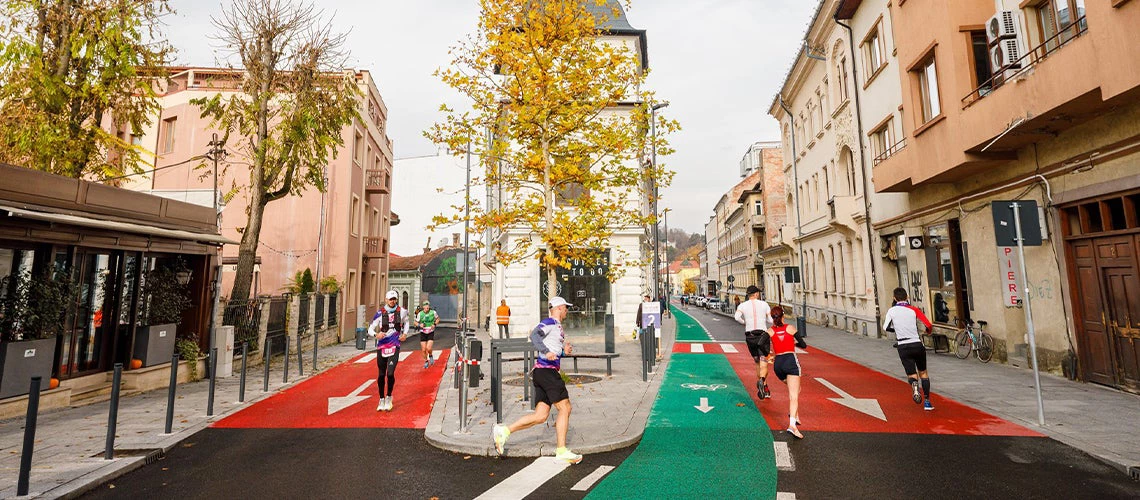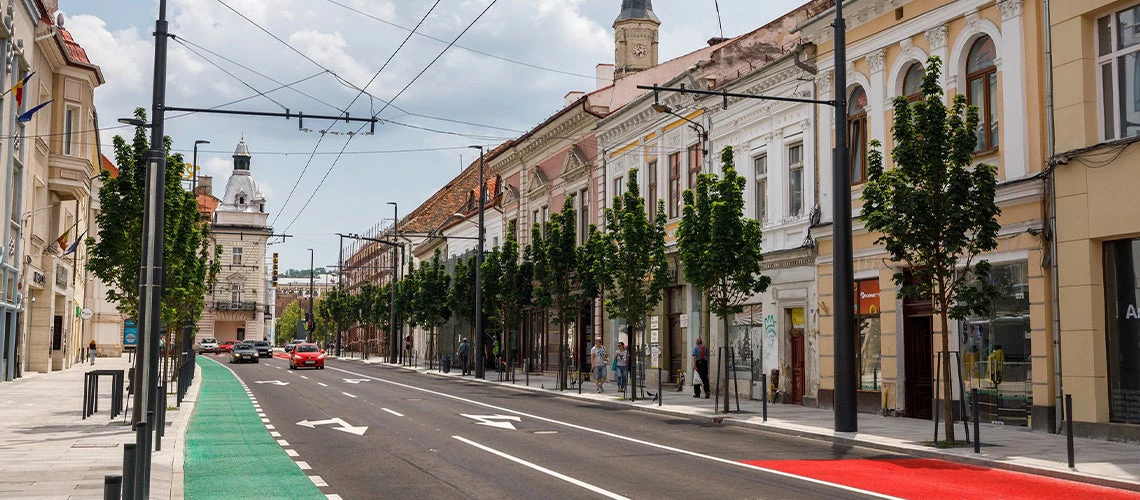 Upgraded urban infrastructure in Cluj-Napoca, Romania
Upgraded urban infrastructure in Cluj-Napoca, Romania
Did you know that Cluj-Napoca is one of the first cities – not just in Romania or Europe, but in the entire world – to initiate the adoption of a NetZeroCity Action Plan? The NetZeroCity Action Plan is a blueprint for making the transition to climate neutrality by 2030 , along with details on needed resources to achieve this transition and key stakeholders that must be engaged.
Recently, the World Bank has provided support to the City of Cluj-Napoca and the Technical University of Cluj-Napoca to identify the main sources of greenhouse gas (GHG) emissions in the city and to propose a comprehensive list of actions to reduce these emissions by over 80%, compared to their 2011 value. This is just one of the many ways in which the World Bank is supporting Cluj-Napoca on its path toward achieving climate neutrality by 2030.
2030 Goals
Meeting the goals of the Paris Agreement is a clear priority for the world. Through the European Green Deal, the European Union (EU) has set for its member countries a biding target of achieving climate neutrality by 2050. Through the Fit for 55 package, EU countries have committed to cutting their GHG emissions by 2030 by at least 55% from their 1990 level . Moreover, through the 100 Climate-Neutral and Smart Cities by 2030 Mission, the EU will provide targeted support to 100 cities, in addition to 12 cities from associated countries, to become climate-neutral by 2030 and serve as an example for other urban areas in the EU. Cities across Europe have prepared detailed applications, and one of those that has been selected is Cluj-Napoca.
Since 2020, the World Bank has been supporting the Municipality of Cluj-Napoca in meeting its GHG goals. The World Bank has worked closely with the municipality on preparing the Integrated Urban Development Strategy 2021-2030 for the Cluj Metropolitan Area, with a clear goal in the Strategy to achieve climate neutrality by 2030, along with a number of clear measures associated with this goal. More recently, the municipality has asked the World Bank and several local stakeholders to provide support with turning key proposals from the Integrated Urban Development Strategy into a NetZeroCity Action Plan—a pre-condition for accessing dedicated EU funds. In response to this request, the World Bank together with a locally formed NetZeroCity Coalition has developed one of the first-ever NetZeroCity Action Plans not only in Europe but in the world. The Plan will undergo consultations with local stakeholders before being approved by the city council.
Furthermore, the World Bank carried out a diagnostic identifying the main sources of GHG emissions, namely the built environment and transport, which comprise 78.3% and 21.3% of total GHG emissions respectively. The diagnostic also shows that Cluj-Napoca faces the following main challenges: poor energy performance of its private and public buildings, traffic congestion and air pollution, as well as an underdeveloped system of green spaces at the city and metropolitan levels.

Seven Interventions
Fortunately, Cluj-Napoca has already taken important steps in tackling some of these challenges, with over 55% of the around 101,000 apartments in communal housing units having already been thermally refurbished. Based on the diagnostic, the Action Plan lays out next steps.
Cluj-Napoca could reduce its GHG emissions by 80% by 2030, over 2011 levels , by pursuing these seven key interventions:
- integrated urban regeneration of apartment block neighborhoods (where 77% of Cluj-Napoca residents live)
- deep renovation of public and commercial buildings (responsible for half of GHG emissions from buildings) and brownfields redevelopment
- improvement of public spaces quality to encourage people to spend more time outdoors and limit urban heat islands
- extension of the network of electric charging stations and benefits for electric car users
- extension of the Walkable City Program (which has been under implementation for a few years) and an update of the parking policy
- major green transport infrastructure and reduction of congestion in the city
- continued expansion of green areas (with a focus on a metropolitan green belt with around 12,500 hectares of new forest).
The process of elaborating the Cluj NetZeroCity Action Plan may serve as a model for other cities to achieve climate neutrality. Some key insights that may be relevant for other urban areas include:
- Not starting from zero, but smartly using existing strategies and plans.
- Taking the national context into consideration and a good national energy mix will have a significant impact at the local level. (e.g., high share of electricity generated from low-emission sources).
- Having a baseline value for reducing GHG emissions, ideally for the year 1990, used internationally to measure progress in this field.
- Having a clear list of interventions that includes both estimated GHG reduction goals per measure, and estimated budget per intervention, as this will give local stakeholders a better sense of how much needs to be done, and how much it will cost to achieve climate neutrality.
- Having from the start a Theory of Change can help guide planning efforts. The World Bank used the Theory of Change approach used for Bank projects to prepare a framework for the Cluj NetZeroCity by 2030 Action Plan.


Join the Conversation